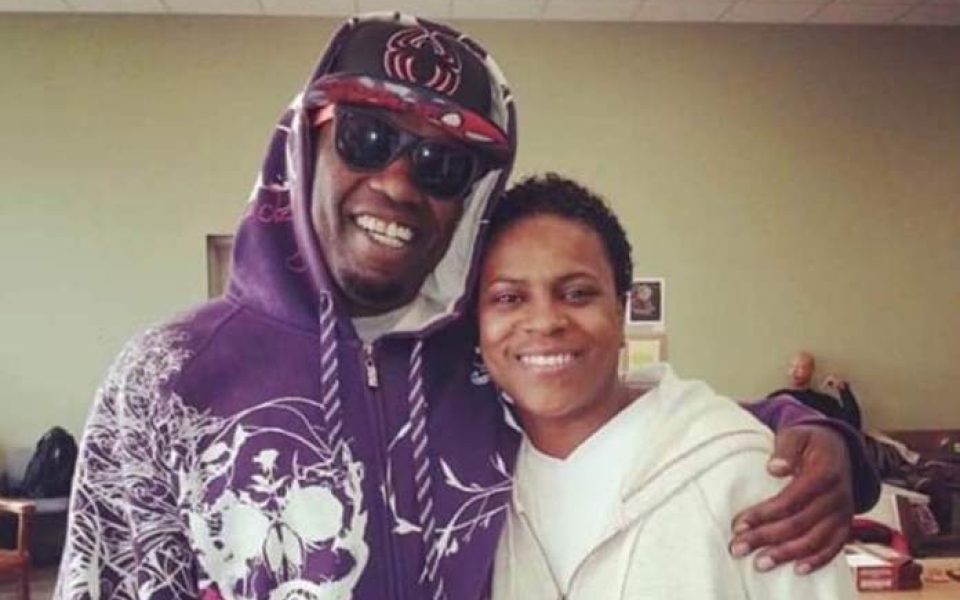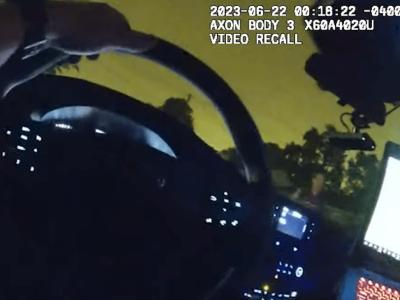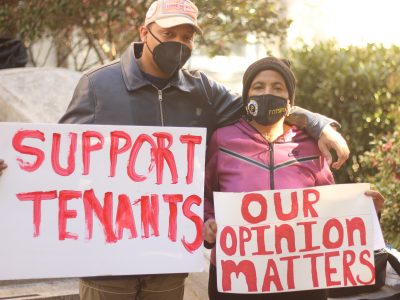Greensboro police used hogtying to restrain a 38-year-old man, who later died at a local hospital after a late-night encounter in downtown Greensboro on Sept. 8, according to a family member who reviewed the police body-camera video.
The Homeless Union of Greensboro is hosting a press conference with members of the family of the late Marcus Deon Smith tomorrow at the Beloved Community Center. Smith’s family delivered a letter to the city today asking for city council to review the body camera footage, hold four officers involved in the incident accountable, and ban the use of hogtying as a restraint.
Smith’s family said in a statement that the officers’ “actions appear to have caused him to pass away. By ‘hogtying’ Marcus, these officers made it impossible for him to continue breathing.”
A police press release at the time described Smith as a “disoriented suicidal subject” whom officers found running in an out of traffic on the 100 block of North Church Street at 12:45 a.m.
Smith’s family members describe him as being in the midst of “mental health crisis” at the time, but insist, “Marcus was not attacking the officers. He may have been acting erratically, but he wasn’t trying to hurt anyone.”
The family statement continues: “Marcus asked the officers for help, but instead of being offered help, four white officers used as much force as possible without directly hitting or shooting him. There were nine officers on the scene, and four that came in direct contact with him. They could have used other methods to restrain him. ‘Hogtying’ him was completely unnecessary.”
The police press release said that while officers were trying to transport Smith for a mental evaluation, he “became combative and collapsed.”
The family tells a different story.
The family said that although EMS was on the scene, the officers put Smith on the ground and hog-tied him instead of immediately helping him into a waiting ambulance.
“Marcus posed no threat to these police officials,” the family said. “He submitted himself willingly and begged for help, and instead was hogtied, and died as a result. He wasn’t deserving of this. In fact, no human being should be treated this way, especially if all he asked was to be helped in his last moments of his life. In the time that he encountered these police officials, every moment counted, and they did nothing.”
Ronald Glenn, a police spokesperson, defended the police department’s use of hogtying.
“All methods of restraint used are within the national standards,” he said.
Hogtying is a controversial practice. In 2007, the chief of the Novato Police Department in northern California acknowledged in a grand jury report that hogtying “is a form of maximum restraint that could be associated with the risk of positional asphyxia.”
In a statement to the city, 24 community leaders are calling on the city to review the police departments use of restraints. “We urge the city to review and, if necessary, amend its policies regarding the practice of hogtying individuals,” they wrote. “We would like a clear answer as to whether GPD officers hogtie people, and if they are trained about the life-threatening dangers associated with these restraints. It is unfathomable that the city could endorse or defend such practices when there is substantial medical evidence showing that hogtying individuals puts them at severe risk of positional asphyxia and consequently death.”
The League of Women Voters of the Piedmont Triad endorsed four requests to city council made in the letter — for each council member to review the video, to seek a court order if necessary to ensure that they can speak publicly about the contents of the video, to seek court authority to release all the footage to the public, and to take punitive action, if necessary, against the four officers.
“This case cries out for a public explanation of police behavior as it relates to training in best practices, standard departmental procedures, and the overall preparedness of the Greensboro Police Department for dealing with the mentally ill,” the league said. “In the absence of a thorough and transparent investigation, citizens can have no confidence that justice has been served for Marcus, his family and the GPD. A Greensboro City Council that does not insist upon the transparency that alone can assure the accountability of city employees when dealing with the public calls into question its legitimacy as representative of all our citizens.”
The letter is signed by the following individuals:
- Marcus Hyde, for the Homeless Union of Greensboro
- Rev. Julie Peeples, Congregational Church of Christ
- Rev. Brandon Wrencher, for the Pulpit Forum
- Rev. Wesley Morris, Faith Community Church
- Rev. Nelson Johnson, for the Beloved Community Center
- Rev. Sadie Lansdale, First Unitarian Church of Greensboro
- Rev. Randall Keeney, St. Barnabas Episcopal Church
- Rev. Carter Ellis, St. Timothy’s United Methodist Church
- Reggie Weaver and Karen Archia, for the Good Neighbor Movement
- Irving David Allen, Greensboro Human Relations Commission
- Lindy Garnette, for YWCA of Greensboro
- Hester Petty, for Democracy Greensboro
- Lewis Pitts
- Spoma Jovanovic, for the faculty of Reclaiming Democracy
- Tiera Moore, for Community Play!/ All Stars Alliance
- Thomas Burwell, for Greensboro Food Not Bombs
- Nikki Marin Baena, for Siembra NC
- Andrew Willis Garcés, for American Friends Service Committee of the Carolinas
- Holden Cession, for Ignite NC
- Afrique Kilimanjaro, for the Carolina Peacemaker
- Vicky White-Lawrence, Anna Fesmire and Gary Kenton, for the League of Women Voters of the Piedmont Triad
Join the First Amendment Society, a membership that goes directly to funding TCB‘s newsroom.
We believe that reporting can save the world.
The TCB First Amendment Society recognizes the vital role of a free, unfettered press with a bundling of local experiences designed to build community, and unique engagements with our newsroom that will help you understand, and shape, local journalism’s critical role in uplifting the people in our cities.
All revenue goes directly into the newsroom as reporters’ salaries and freelance commissions.





Leave a Reply